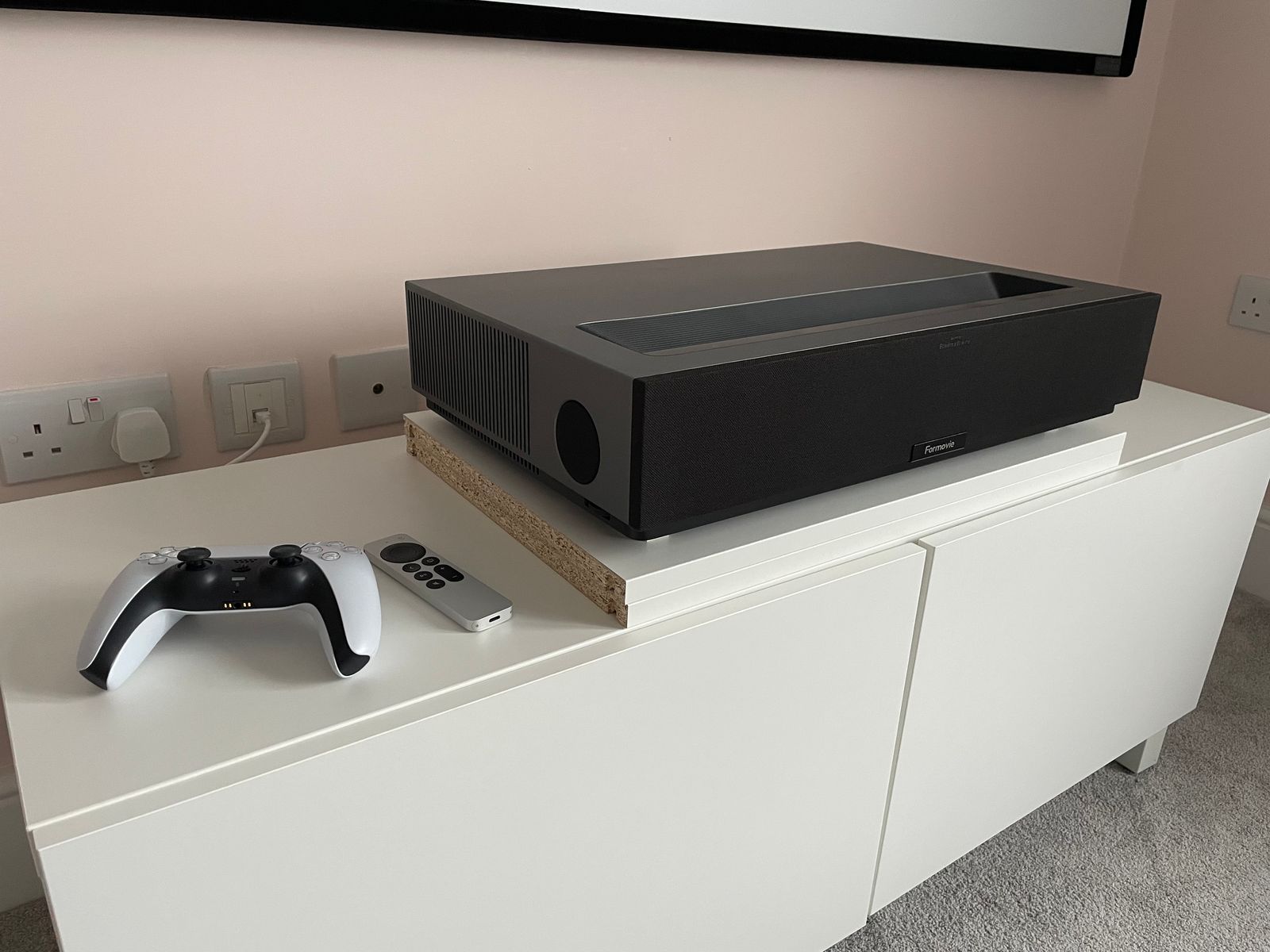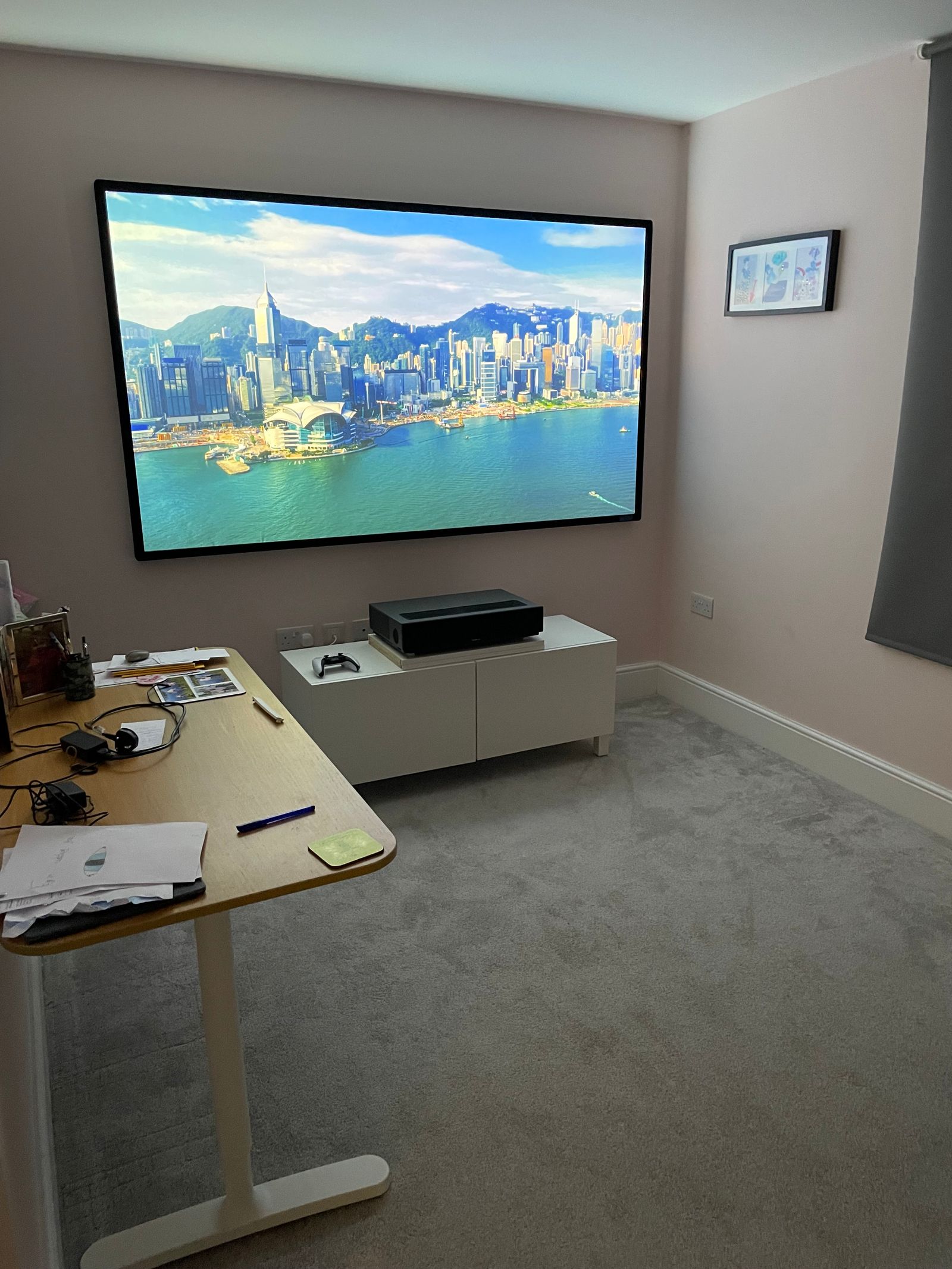Formovie Theater Projector Review
Until very recently, my two daughters shared a bedroom. My eldest has now reached the age that she wanted her own room - this is OK and something my wife and I had always anticipated. The condition for her getting her own room was that the "playroom" (a.k.a the plastic toy graveyard) would have to be sacrificed because the new bedroom was being used by her mum as a study. As luck would have it, my wife is changing jobs which means she doesn't really need a dedicated room for work anymore (just a desk to work at) and hence permission was given to me turn the playroom into a "den" / occasional study.
I could have just mounted a TV on the wall and been done with it but I've long coveted a dedicated space for a projector. I already own a pretty good short throw 4K projector (the ViewSonic X10-4K) but that wasn't going to work in this room because it has to sit about 2 m in front of the screen to get a 90-100" image. Additionally, one of the conditions of the new den was that it had to function as an occasional study and look tidy most of the time and so permanently setting up that projector in place was a no go. After a lot of research I settled on the Formovie Theater.
The Formovie Theater is an ultra short throw (UST) projector, also known as a "laser TV". These projectors sit immediately underneath the screen (or wall) and project the image upwards. There's no mounting from the ceiling (with the associated technical challenges of getting power and HDMI into the roof) as with a traditional projector or no snaking of cables to a short throw projector that sits a metre or two in front of the screen like with my old ViewSonic projector. You literally plug the projector into a power socket and away you go.
First things first, this thing is pretty large and quite heavy. Not a big issue if you plan on plonking it down on top of a TV bench and forgetting about it but worth considering if you're thinking about getting it out every now. There are plenty of nice pictures of the unit on the web but here's a shot of it in place in the den next to a PS5 controller for scale:

Connectivity wise it's quite generous, particularly for an UST projector. It has three HDMI inputs (one of which is eARC), ethernet, optical out, line in and two USB-A ports.
It uses Android TV (version 11 as of the time of writing) as it's operating system. Honestly I haven't really explored it as I've got an AppleTV hooked up to it as my primary interface. I've heard good things about Android TV with the exception that you can't use the Netflix app (some sort of licensing issue). If you want to use Netflix with this you'll need a third party device (like an AppleTV, Fire stick, etc).
You can read the full specs on the Formovie website but this projector supports pretty much all the standards you'd like such as Dolby Vision, Dolby Atmos and 4K HDR. Apparently it does support ALLM (auto low latency mode) which automatically puts the projector into "game" mode when connected to a console but I haven't been able to get this to work yet. My PS5 says that my TV doesn't support it which is a little weird. I may just have to enable a setting somewhere.
Most projectors nowadays have some sort of built-in sound system and typically they are terrible. The Formovie Theater is an exception. Its audio is engineered by Bowers & Wilkins and it's phenomenal. I'm a bit of an audiophile and in my lounge I have the Sonos 5.1 system (Arc, Sub and two Play:1s) which I'm mostly very happy with. I had planned on migrating this sound system into the den but honestly I don't think I'm going to bother. Whilst I'm sure the Sonos is better than the projector's sound system I don't think it's worth the hassle of moving it from another room - I think that's pretty high praise.
Setting up the projector is straightforwards enough but is a little tedious. The size of the image is directly related to the distance from the back of the projector to the wall. To make the image larger you move the projector away from the wall, to make it smaller you move it closer. I've settled on a 92" screen and the back of the projector is 21 cm from the wall. Since the projector is 35 cm deep that means the front of the projector is 56 cm from the wall. Bear this in mind when considering the TV bench's position. Also, there's no real height adjustment, hence why you can see in the image above that the projector is sat on some wood. This is necessary to elevate the image to where I ended up mounting the screen. The projector does offer some keystone correction options which can fine tune a wonky image but that comes at the cost of (minor) image quality loss. I wanted to avoid this.
What's the picture like then? Well, when the projector first arrived I didn't have a projector screen so I just used the wall for the first few days. The wall is pale pink and pretty flat and not coated with anything special. The image was so good that I almost didn't buy a dedicated screen for it. My wife actually preferred it when there was no screen since the look was more minimalist. With a dedicated projector screen (I went for this 92" fixed frame one) I think the image is fantastic and is certainly brighter. I wrestled internally about whether to pay the extraordinary premium for an ALR (ambient light rejecting) screen but I don't think it's necessary and I'm glad I saved the £1000+ by just buying a "regular" 4K projector screen. This is a triple laser projector with a maximum brightness of 2800 ANSI lumens. From a practical perspective I can watch it with background illumination from the spotlights in the centre of the room's ceiling but I choose to watch it in the dark with the blinds pulled for that true cinema feeling. The image is super bright, absolutely crisp and gorgeous. In my subjective opinion it's better than my one year old OLED LG 55" TV and blows my ViewSonic out of the water. I'm very happy with it.
For the curious, here's the current setup:
